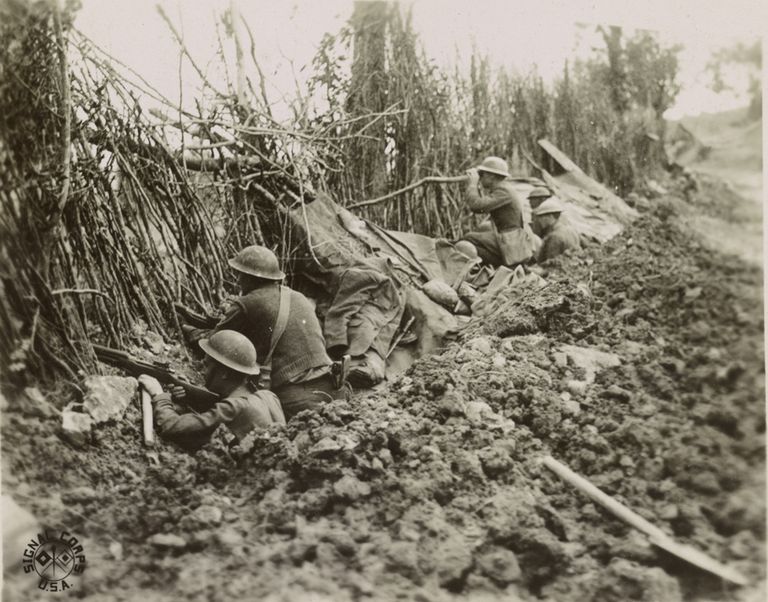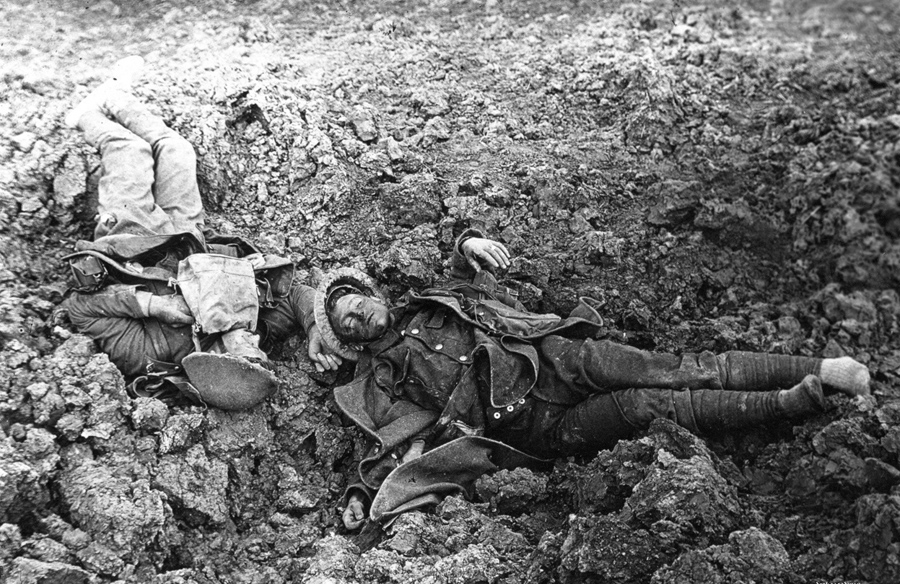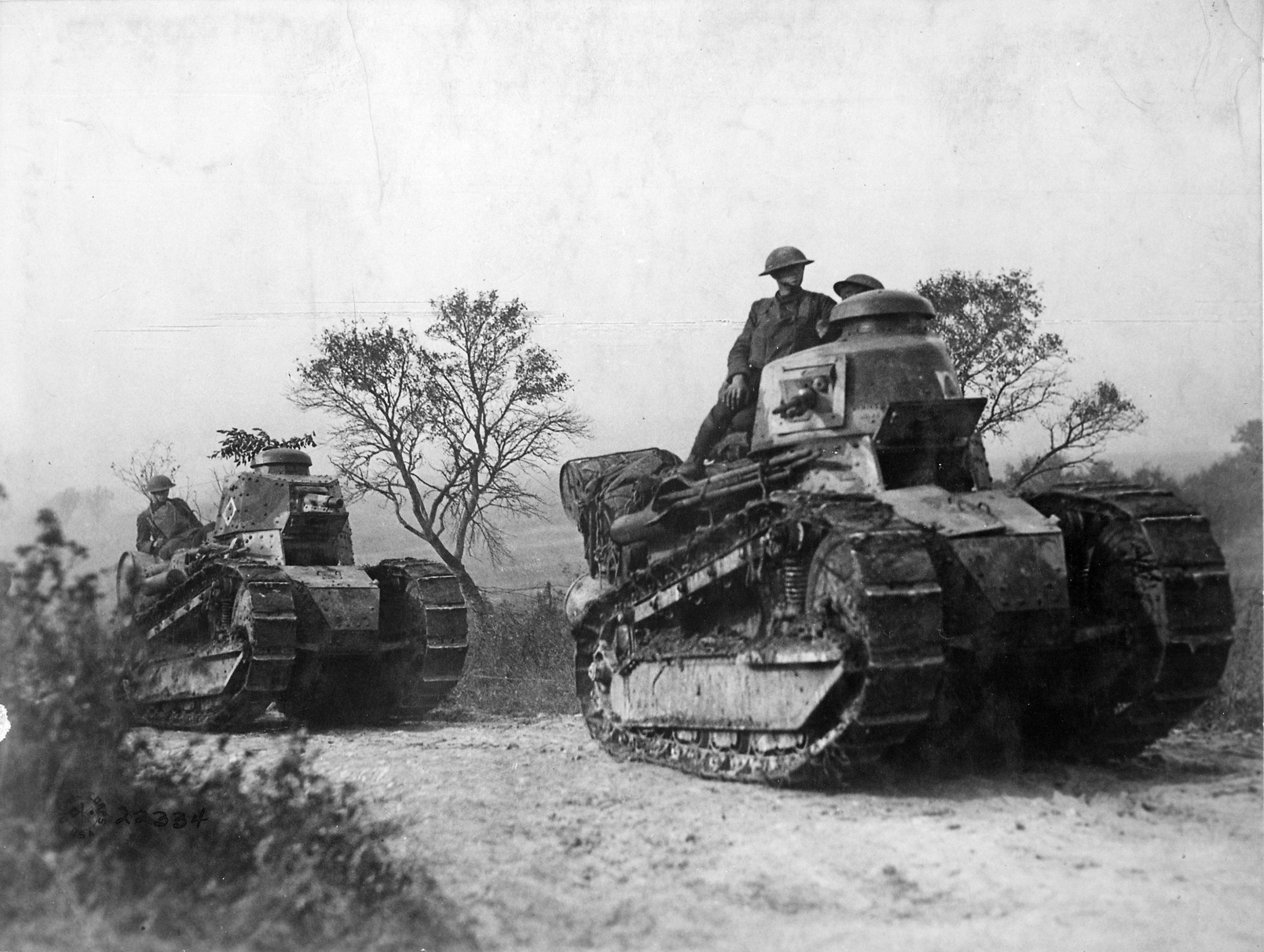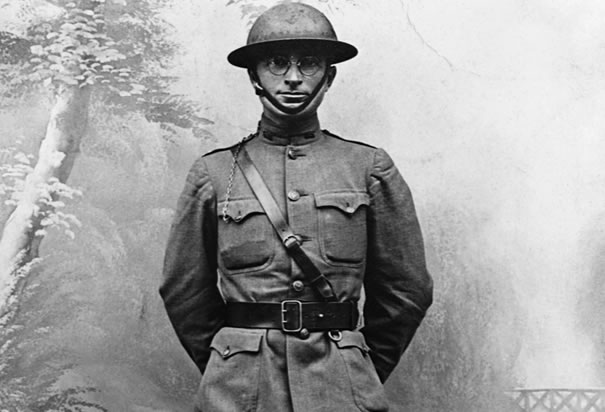Americans Struggling, Allies Desperate;
A Future President on the Front Line.
Special to The Great War Project
(30 September) This is the decisive moment, the Allied attack at the Meuse-Argonne forest, a century ago on the Western Front.
“On Thursday 26th September, the Meuse-Argonne opened,” reports historian Gary Mead. It was enormous. “The initial artillery bombardment was conducted by nearly 4000 guns.
Eventually more than 1.2 million American soldiers take part in this vast battle in northern France.

The battle for the Meuse-Argonne forest begins, September 1918.
Initially the Meuse-Argonne offensive struck a serious blow to the German army. The American Commander, General John J. Pershing writes: “The enemy has been struck a blow so powerful that the extreme gravity of his situation in France was obvious to him.”
“His tired divisions,” Pershing continued, “had been battered and nowhere with more dogged resolution than in front of the American First Army, his most sensitive point.”
Not all agree.
“This was wishful thinking,”
…writes historian Mead. The Germans are badly outnumbered, and there is no avoiding the fact that the green American divisions were revealed as grievously inexperienced, and sometimes poorly led.”

The casualty rate was enormous on both sides in the battle for the Meuse-Argonne forest.
By September 27th the momentum of the whole offensive had been slowed to a virtual halt. And Mead reports, by October 1st the whole attacking force had in total advanced but four miles over some of the worst terrain and most densely defended positions to be found in the First World War.
“The Meuse-Argonne offensive was threatening to turn into a costly and humiliating debacle.”
Writes historian Gary Mead: “In the four brutal days of 25 to 29 September, the American First Army had sustained 45,000 casualties,…
a rate of destruction as bleak as at almost any other period in the war.”
“In another ominous reminder of the previous ghastly campaigns of 1916 and 1917, the Allied advance had slowed almost to a crawl. The Meuse-Argonne campaign was threatening to fall apart.”

An American tank unit at the Meuse-Argonne forest.
According to historian Thomas Fleming, “everything imaginable proceeded to go wrong with Pershing’s army.” The Germans fell back to well prepared defenses. Then the German gunners began to mow the Americans down.
“Massive amounts of enemy artillery on the heights east of the Meuse River and along the edge of the Argonne forest,” Fleming writes, “which loomed a thousand feet above the valley floor on the west exacted an even heavier toll.”
“The American advance stumbled to a bloody halt.”
At one point, farm boys from Missouri and Kansas with no experience of modern warfare teetered on the brink of rout.
They were rescued, reports historian Fleming, by direct fire from their artillery including a battery manned by Captain Harry Truman. “If I hadn’t gotten up at 4 a.m.” writes Truman, “I wouldn’t be here.”

Captain Harry Truman
The attacking Allies sustain a casualty rate of more than fifty percent.
“Even by the standards of the Western Front,” writes one historian, “the scale of the German losses was astounding. Thirty-three thousand prisoners in one day.”
The Americans suffer as well.
As one soldier put it, “Every goddamn German there who didn’t have a machine gun had a cannon.”
And this just in the first two days of the battle for the territory known as the Meuse-Argonne forest.

1 comment for “THE MEUSE-ARGONNE OFFENSIVE GRINDS TO A HALT”